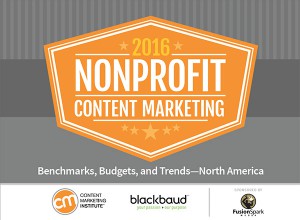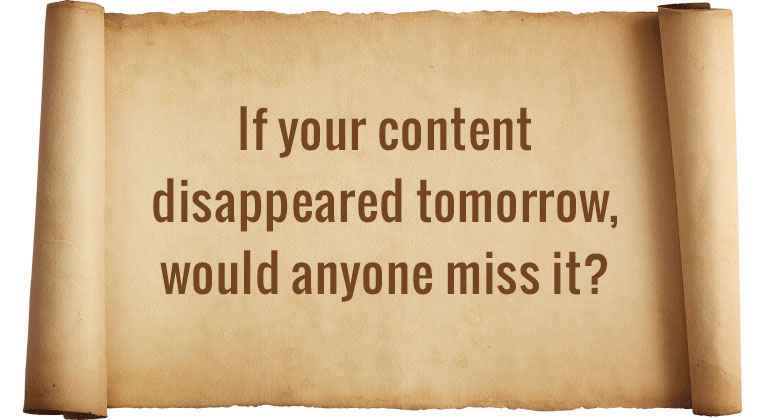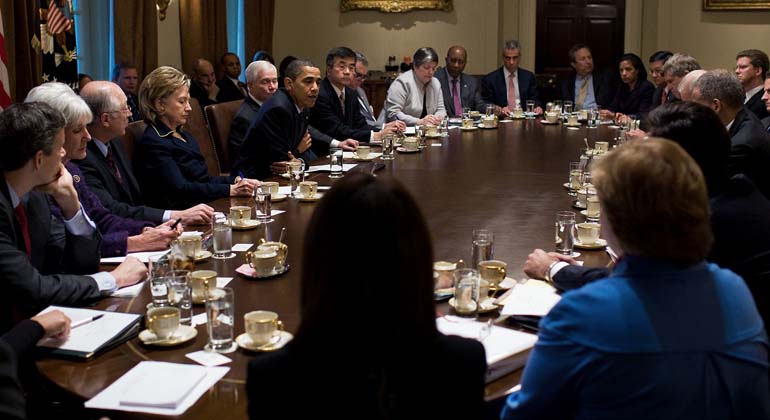 For the 3rd year in a row the Content Marketing Institute, partnered with Blackbaud, has produced the Nonprofit Content Marketing Benchmarks, Budgets and Trends report, with FusionSpark Media as the Content Marketing agency sponsor.
For the 3rd year in a row the Content Marketing Institute, partnered with Blackbaud, has produced the Nonprofit Content Marketing Benchmarks, Budgets and Trends report, with FusionSpark Media as the Content Marketing agency sponsor.
As an agency that has produced content marketing initiatives for nonprofits (as well as government agencies) for more than a dozen years, we’ve had front row seats to the challenges this sector faces when adapting content marketing strategy and tactics.
By successfully establishing just four essential best practices, a nonprofit team can significantly increase it’s content marketing effectiveness.
So, it’s no surprise to us that this year’s report indicates MORE nonprofits are doing content marketing, yet at the same time FEWER identify themselves as being effective. According to the 2016 report, effectiveness decreased from 35% of respondents to 26% of respondents.
It really doesn’t need to be this way, though.
By successfully establishing just four essential best practices, a nonprofit team can significantly increase it’s content marketing effectiveness.
So, while the Content Marketing Institute / Blackbaud / FusionSpark Media study reports extensively on the most frequently used tactics, content types and social media channels, etc., we’d like to focus your attention on the report’s findings about the four essentials of Nonprofit Content Marketing effectiveness.
Essential #1: Document Your Content Strategy

From The Report:
In general, nonprofit marketers who have a documented content marketing strategy are more likely to get better results with the tactics and social media platforms they use (i.e., they rate them as more effective) than those who have a verbal-only or no strategy.
Our Take:
For the 3rd year in a row, producing a documented content marketing strategy ranks as an important factor in Nonprofit content marketing effectiveness. Having a documented content marketing strategy serves the purpose of avoiding “random acts of content.” Not only does it serve the purpose of directing the effort, it serves an important role in measuring the ROI of the effort. By documenting in the content strategy what will be measured and how, as well as capturing important baseline metrics from the outset, nonprofit content marketers will have greater success measuring and reporting on content marketing ROI.
Essential #2: Document Your Editorial Mission Statement

From The Report:
Amongst the most effective nonprofit content marketers, 42% have a documented editorial statement.
Our Take:
Does your team know who you’re creating content for and why?
And perhaps more importantly, have you identified an editorial mission that is going to shape you into the definitive resource about the area of focus for your nonprofit? Or, looking at it another way, have you crafted a written editorial mission based upon insights into audience needs, so that the content you create for them is indispensable? If your content disappeared tomorrow, would anyone care? That’s a tough litmus test, but an important one.
Having both the written content strategy and the written editorial mission statement are critical to the next essential best practice, which is team meetings.
Essential #3: Meet Regularly to Discuss Your Content Marketing Program

From The Report:
50% of the most effective nonprofit marketers (vs. 24% of the least effective) meet daily or weekly to discuss their content marketing program. An additional 24% of the least effective meet only when it is necessary.
Our Take:
Ok, meeting with your team regularly to discuss your content marketing may not rise to the level of importance as a full cabinet meeting about national security. But, it’s close.
Discussing your documented content strategy and your editorial mission means your team’s “train” leaves the station on the same track, headed in the same direction. This insures that everything from your weekly blog posts to your larger, quarterly or semi-annual content initiatives, stay true in editorial tone, and deliver the right calls to action, from awareness generation to fundraising.
If this sounds like we’re saying that following through on your documented content strategy is important, well, that’s exactly what we’re saying!
While follow through on a documented content strategy might sound like a given, it’s not. It has to be worked at, with intention.
Essential #4: Be Clear About What Content Marketing Success Looks Like

From The Report:
Nonprofit marketers whose organizations have a clear vision of content marketing success are more effective than those that do not (61% of the most effective nonprofit marketers have clarity compared with 10% of the least effective).
Our Take:
If you’ve read this post this far, you’ll notice that there’s a bit of a theme when it comes to being an effective Nonprofit Content Marketer. Written content strategy, written editorial statement and frequent meetings all contribute to providing clarity for the initiative. All four of these best practices are essential to highly effective content marketing. Without them you’re nonprofit content marketing initiative is almost certainly to be “dead on arrival,” before it even starts.